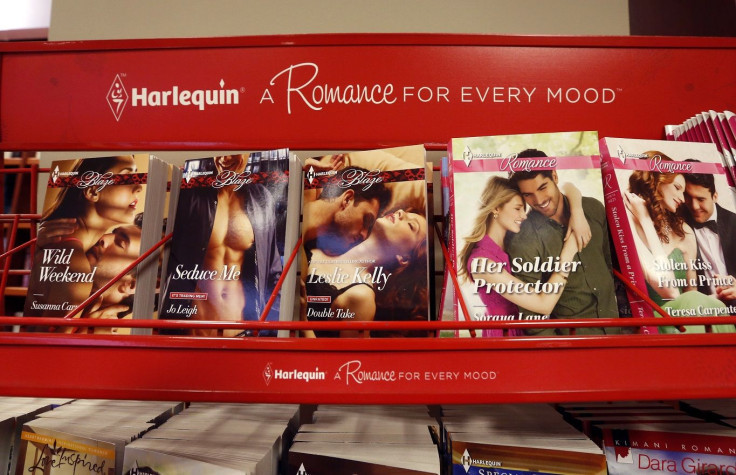Romance isn’t dead: What mobile app makers can learn from the literary genre

When E.L James released the first book of the erotic trilogy “50 Shades of Grey,” in 2011, she had no idea it would appeal to millions of readers worldwide. Her books were loved by fans but castigated by critics.
Some called James’s writing, boring and clunky, while others seemed aghast that one allegedly badly written book could even be published. While critics lambasted the author for her writing, at the end of the day, it is the 125 million book reader’s interest that overpowered any criticisms.
The resilience of romance
There is a broader fan base for this genre, and the Romance Writers of America have the numbers to prove it. In 2013, estimated annual sales of romance books were valued at US$1.08 billion (AU$1.4 billion). British readers are also hooked on reading romance books, reports the Publishing Perspectives. The billion dollar industry sales rose from US$1.438 billion (AU$1.93 billion) in 2012 and generated more than US$1.35 billion (AU$1.81 billion) the following year.
Nielsen’s Book Buyer Report conducted their own study and found out that romance book buyers are getting younger, with an average age of 42. The report also suggests that more women at 84 percent are likely to purchase these books. Strong human emotions — grief, anger, revenge and loss — remain to be the main selling power of this genre which appeal greatly to women.
These women are also more likely to remain loyal to the genre and are found out to have greater staying power as readers, which is good news for publishers, suggests the Economist. In turn, publishers pushed their limits by being responsive to dynamic trends and niche tastes. The same RWA report showed that 39 percent accounted for e-book readership compared to 32 percent of mass-market paperback sales.
Indeed, readers’ thirst for erotic and romance novels have not faltered over the years. Even with the stigma attached to this genre, the industry remains steadily strong and innovative. In fact, the sector was the first to utilize digital platforms such as e-books, which most readers open on smartphones. A Nielsen slide pack showed that the romance genre maintained its strong leadership in the e-book sector over the years.
In a 41-page Book Industry Study Group (BISG) report titled Consumer Attitudes Towards Ebook Reading, the romance genre outperformed 14 categories, including mystery, travel, science and general fiction. Romance readers have also preferred the e-book format compared to its print counterpart. Amazon’s July 2014 author earnings showed that romance authors generated more than US$400,000 (AU$538,000), ahead of mystery and nonfiction authors.
Lessons from the romance genre
The age of the smartphone is undeniable and the onset of digital platforms remains to be the driving force that compels readers to shift from traditional print to mobile. It is no surprise then that news has been veering the digital way, much like romance and other literary genres have. News consumption is continuously evolving, catering to the needs of a highly mobile society. However, the question is: Can mobile news apps generate millions of loyal readers just like the romance genre?
The answer lies in the ability of mobile news apps to be responsive to the changing tastes of readers and publisher’s ability to stir strong human emotions to their news. In the same way that readers are engaged in the romance genre and similar other niches, compelling stories and content are what readers anticipate.
A paper by Neil Thurman and Steve Schifferes, titled " The Future of Personalization at News Websites: Lessons from a longitudinal study," technically defined personalisation as a form of user-to-system interactivity which utilises various technological features in order to cater to the dynamic preferences of individual users.
Born2Invest founder and CEO Dom Einhorn believes in the power of personalisation to secure reader’s loyalty.
“More than a strong curatorial voice and sophisticated layout we provide our readers, at the end of the day, what matters most is our ability to provide users with 80-word summaries that immediately capture their attention and interest,“ said Einhorn.
The mobile news app for business and finance launched barely a year ago and its personalisation paid off. In just a short span of time, it gained the third highest ranked mobile app in the business news category on Google Play. Today, Born2Invest enjoys more than 80,000 monthly active users on average.
Mobile social news magazine, Flipboard also shifted from mobile news to a personalised news app. A report from Techcrunch revealed that the company relaunched its web page to move into a more personalised format just as its mobile app. The web page was able to integrate the unique design principles on mobile and the user interactivity on web.
Despite criticisms faced by romance readers and publishers, they still pursue publishing and even used new mobile platforms to develop this genre. This is largely because they remain human and stir human emotions that readers are looking for, stories that remain personal to them. This is one characteristic that mobile news platforms should embody, a strong acceptance for change and development with the ability to capture personal interests.






